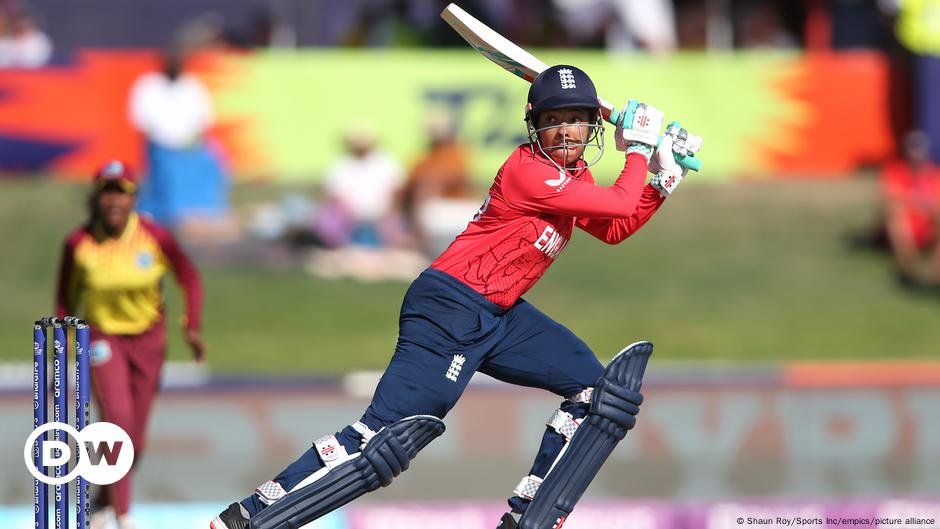Slow progress towards diversity in England women’s cricket – DW – 02/16/2023
“I spoke to Adil and he said we had Allah with us and I said we had the rub of the green. It actually epitomizes our team, it’s full of quite diverse backgrounds and cultures.”
When England’s men’s side won their first-ever One-Day International cricket (ODI) World Cup in 2019, Eoin Morgan, the team’s Irish-born captain, used his post-match press conference to highlight the diversity that ran through the highly successful squad.
With the South Asian community consisting of just over 4million people (6.9% of the population of England and Wales) and the Afro-Caribbean community 2.4million (4%), it is of little surprise that one of the country’s major sports teams reflects society.
Yet, it is a largely different story for the women’s side despite the national team entering their professional era almost 10 years ago, with players from minority backgrounds struggling to break into the England team.
‘It has to start at a grassroots level’
When England Women won their own ODI World Cup on home turf in 2017, in front of a sold-out Lords’ crowd, it was hailed at a momentous moment for women’s sports in the country. But the team’s 15-person squad consisted entirely of white players.
The lack of ethnic diversity within the women’s international side was not lost on the England and Wales Cricket Board (ECB), who made ‘South Asian Action Plan’ and ‘Transforming Women’s and Girls’ Cricket’ two of their six priorities in a game-wide growth strategy to run from 2020-24.

For England bowler Freya Davies, the root to seeing the makeup of the national team more accurately reflect the society they represent is planted with engagement in youth cricket.
“I understand that the team at the moment doesn’t reflect how society looks at a whole,” Davies told DW. “That’s a reflection more on where the game was 10 years ago.
“The ECB have put a lot of effort into improving their engagement with ethnic minorities. With things like the ACE program, they are making cricket so much more accessible to those communities.
“That has to start at the grassroots level, you have got to get ethnic minorities involved at a young age, knowing that cricket is an option for girls.
“When I was growing up [cricket as a career] just wasn’t an option and for so many girls in this team, if you didn’t have an older brother, you didn’t play cricket.”
Former player investing in youth engagement
The African-Caribbean Engagement Programme Charity (ACE) Davies spoke of was the brainchild of former England player turned TV pundit, Ebony Rainford-Brent, founded in January 2020 to engage with that specific community.
The former-bowler felt compelled to open an avenue to the game at the time when a survey showed a 75% decline in the number of black British professional cricketers across the men’s game.
As the first black woman to play for England, Rainford-Brent was equally aware of the limitations for young girls in accessing pathways into cricket outside of playing for boys teams.
Beginning in London, ACE’s aim was to offer scholars appropriate opportunities and access often lacking to those from lower socio-economic backgrounds.
Having spread across the country in the three years since its launch, the charity has helped plenty of youngsters, but only 33% of those participating in the community hubs are female.
Yet, Davies has noticed a perceptible change in the young girls turning up to watch the women’s national team, in part down to the targeted exposure ethnic minorities are gaining at youth level.
“There is definitely a shift,” she explained. “There are so many more girls from diverse backgrounds coming to watch our games, who want to emulate us and be part of the team.”
“I think it may take a few years still to be realized but we will see that real shift in what the national team will look like and that’s only good for the game.”
International development of women’s cricket creating knock-on effect
The ECB’s investment in various Girls’ CAG programmes has continued to offer small but positive results too, with data showing that in 2022, 14% of participants are from ethnically diverse backgrounds, compared to 10% in 2021.
But, although 27-year-old Davies noted that she was hopeful to see the national team become more diverse during her career, she was realistic that it is a change that remians a long-term project.
Of the current 15-player squad participating at the T20 World Cup in South Africa, only Sophia Dunkley comes from a ethnic minority, while Dunkley and Izzy Wong were the only two players from an ethnically diverse background of the 18 awarded one-year central contracts by the ECB in November 2022.
While the Federation of International Cricketers’ Associations’ (FICA) most recent women’s professional cricket global employment report stated that England had the “most established women’s cricket structure” the path towards diversity through the youth pathways and the national setup is still long and uncertain.
Edited by: Matt Pearson
For all the latest Sports News Click Here

